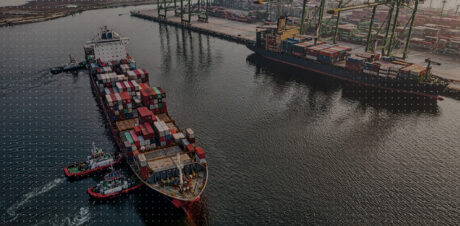After the enactment of the Uyghur Forced Labor Prevention Act (UFLPA) last year, new forced labor requirements were added to the CTPAT Security and Trade Compliance program.
CTPAT, which stands for Customs Trade Partnership Against Terrorism, is a voluntary supply chain security program between U.S. Customs and Border Protection (CBP) and supply chain stakeholders – including importers, carriers, consolidators, licensed custom brokers, and manufacturers. To become a CTPAT member, applicants must agree to implement specific security measures and best practices throughout their supply chain. In return, CTPAT compliant organizations receive advantageous screening processes for their imports and exports.
New forced labor requirements
In late 2022, it was announced that existing CTPAT trade compliance partners must meet new forced labor prevention requirements to retain their status. By August 1, 2023, CTPAT partners must provide proof to CBP that they meet the following six requirements:
- Implement risk-based mapping: Partners must conduct risk-based mapping that outlines their supply chains in their entirety, including regions and suppliers that they feel pose the most risk for forced labor.
- Create a code of conduct: Partners must put in place a code of conduct statement indicating their position against the use of forced labor in any part of their supply chains.
- Provide evidence of implementation: Partners must provide CBP with evidence of the implementation of their social compliance program, including, if requested, their risk assessment. Examples of evidence include unredacted audits of high-risk supply chains related to forced labor and internal training programs for employees on identifying signs of forced labor.
- Conduct due diligence and training: Partners must provide training to suppliers on their social compliance program requirements that identifies the specific risks and helps identify and prevent forced labor in the supply chain. Training should exemplify the partner’s position against forced labor as stated in its code of conduct and must ensure that the supplier’s business model and code of conduct expressly state that it will not partner with businesses that use forced labor.
- Put a remediation plan in place: Partners must have remediation plans in the event that forced labor is identified in their supply chains. A remediation plan must include the process for disclosing information to CBP and outline the necessary steps for the partner’s employees and suppliers to correct the issue.
- Share best practices: Partners are required to share best practices with the CTPAT Trade Compliance program to help mitigate the risk of forced labor.
In return for providing the above information to CBP, on top of the existing benefits CTPAT Trade Compliance members receive, CBP will offer:
- Priority Review for Shipments Detained Due to Forced Labor: CTPAT members that have goods detained due to forced labor concerns will benefit from prioritized review. Additionally, if CBP does not make a decision within the statutorily defined time periods, merchandise will be deemed excluded.
- Redelivery exemption for goods with suspected ties to forced labor: In instances where goods are cleared for entry, but within 30 days CBP determines that the goods may have ties to forced labor, CBP may require redelivery of the goods until an admissibility decision can be made. CTPAT members are exempt from redelivery and may instead hold their shipments in their facilities, avoiding additional shipping costs.
Detained Withhold Release Order Shipments Move to Bonded Facility: CTPAT members that have shipments detained will be allowed to move the goods to a bonded facility until CBP makes an admissibility determination. This may also save the importer additional logistics fees.
Meet CTPAT requirements with Sayari
To not lose out on the benefits of being a CTPAT Trade Compliance member, importers can leverage on a commercial risk intelligence platform, such as Sayari Graph to help them meet these requirements. The platform leverages global public records and graph technology to pre-compute complex, cross-border corporate networks, thus providing a clear picture of supply chains. This comprehensive view provides importers with broader context surrounding their partners and counterparties. If you’re looking to stay in lock step with regulators, CBP also relies on Sayari Graph data for their forced labor investigations.
>> Learn how to enhance your supply chain audit with Chinese public records <<
Additionally, Sayari Graph supports forced labor investigations with its:
- Precomputed UFLPA Risk Indicators and a suite of graph analytics tools to empower import control teams to quickly and confidently identify forced labor within their sub-tier supplier networks.
- DHS CBP UFLPA entity lists enriched with 5,000 previously unidentified subsidiaries, joint ventures, branches, and affiliates.
- Profiles on 1.6 million corporate entities geolocated in Xinjiang Province as well as 91 million Chinese companies, continuously updated to ensure you’re working with current information.
To see exactly how Sayari Graph can support your CTPAT compliance efforts, watch our in-house analysts perform an example investigation to mitigate the risk of Xinjiang forced labor in global supply chains.



